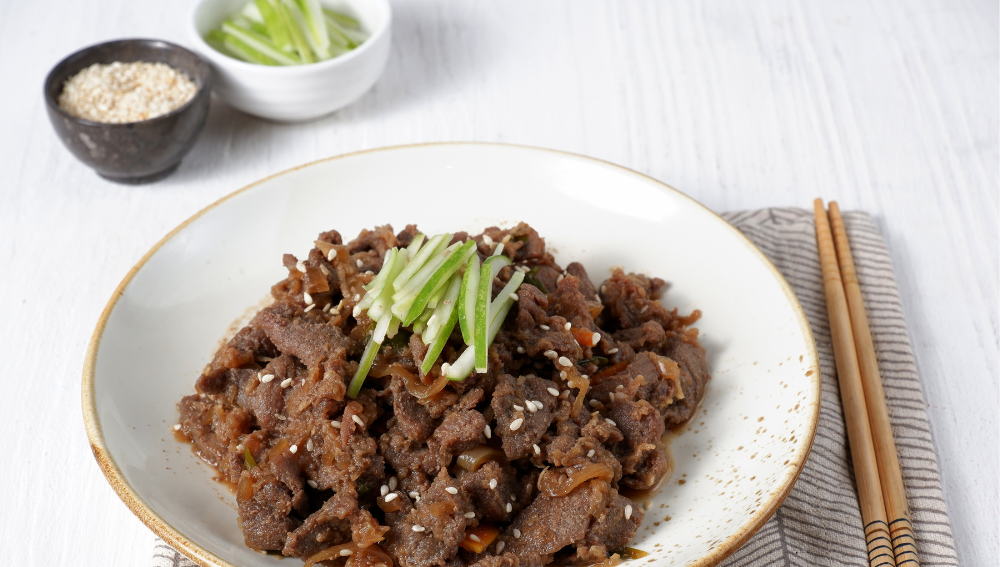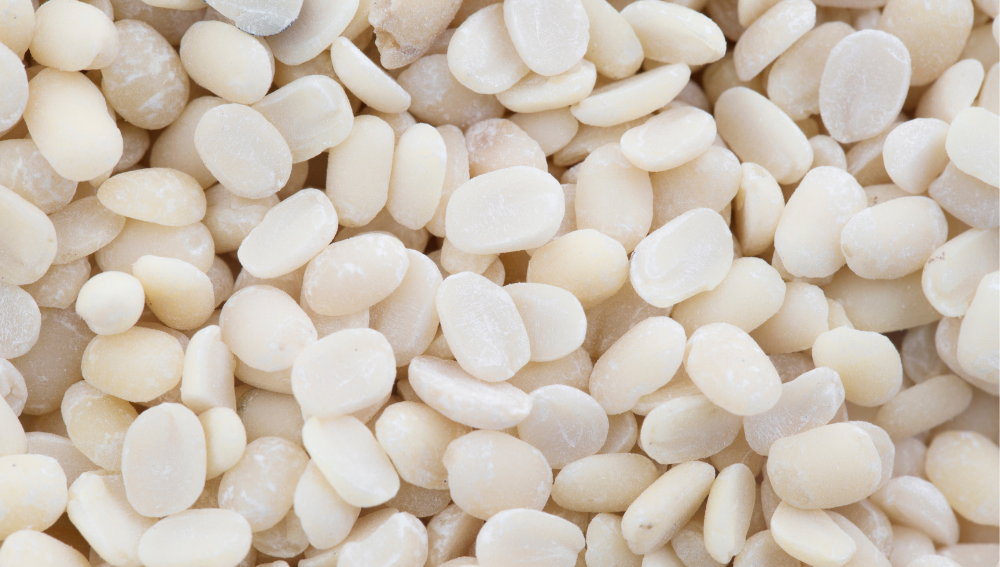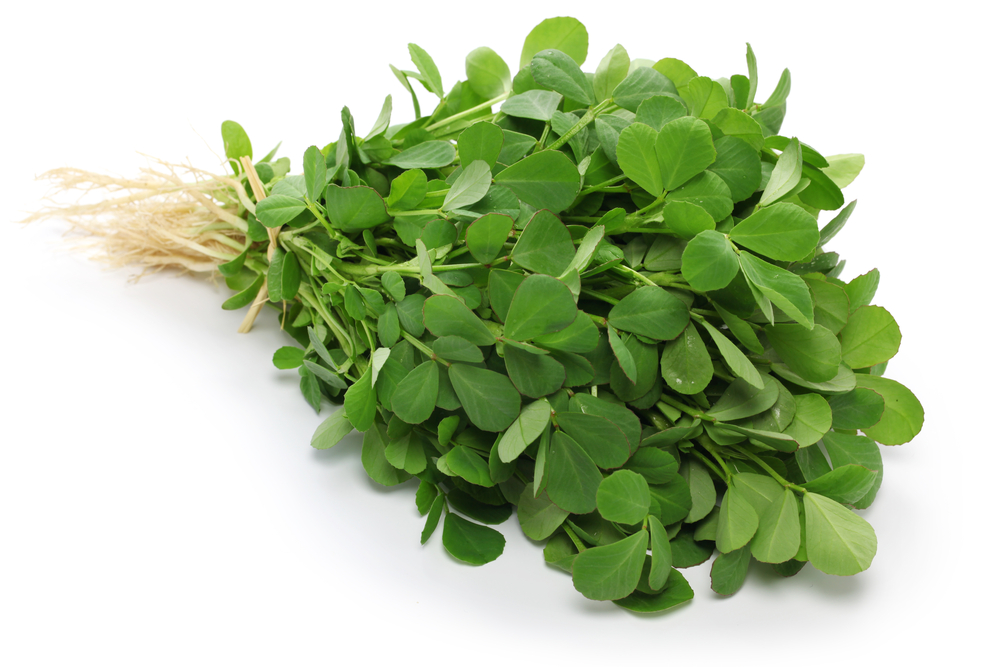Kala Namak, also known as black salt or Himalayan black salt, is a popular seasoning in South Asian and Indian cuisine. This distinctive salt has a pungent, sulfurous aroma that adds depth and complexity to the dishes it’s used in.
While the flavor of Kala Namak is unique and irreplaceable in certain recipes, there are occasions when a substitute is needed.
Finding the right Kala Namak substitute can be a challenge due to the salt’s specific taste and the crucial role it plays in many recipes. However, several possible alternatives can be considered when it’s not available or if someone prefers to use a different seasoning with a similar taste.
In this article, we will discuss some of the best substitutes for Kala Namak, how to use them in cooking, and their potential health benefits and drawbacks.
Key Takeaways
- Kala Namak is a distinct seasoning with a sulfurous aroma, used predominantly in South Asian and Indian cuisine
- A suitable substitute can be found based on the dish’s requirements and the seasoning’s flavor profile
- Health benefits and drawbacks of Kala Namak and its substitutes should be considered when making a choice
What is Kala Namak?

Kala Namak, also known as black salt, is a unique and highly flavorful salt that originates from the Himalayas. It is commonly used in South Asian cuisine and has gained popularity in various parts of the world due to its distinct taste and numerous beneficial properties.
This exceptional salt derives its color from the presence of sulfur and other minerals like iron sulfide, which also contribute to its high sulfur content.
The rich, earthy flavor of Kala Namak can be attributed primarily to its sulfur components. The color can range from brownish-pink to deep purple, depending on the specific composition of its mineral content.
Kala Namak is primarily harvested in the regions of the Himalayas, South Asia, and certain volcanic areas. The salt forms as a result of the natural processes occurring within volcanic rock salt and is recognized for its ayurvedic properties.
These attributes make Kala Namak a sought-after ingredient in South Asian cuisine and traditional medicine.
Finding Kala Namak in grocery stores may be challenging in some regions; however, many South Asian grocery stores stock this authentic and exotic salt.
Those interested in incorporating Kala Namak into their cooking can try searching at their local South Asian grocery store or online shops specializing in international foods.
In summary, Kala Namak or Himalayan black salt is a unique and highly sought-after ingredient due to its distinct flavor, rich mineral content, and ayurvedic properties. Its availability in South Asian grocery stores and online shops has made it more accessible to a wider audience.
Understanding Salt Varieties
Salt is an essential ingredient in almost every cuisine around the world. It not only enhances the flavor of our food, but also serves as a crucial nutrient. Although all salts serve a similar purpose, there are many different types available, each with its own characteristics.
Table salt is the most commonly used salt in households and is obtained from the evaporation of saltwater or mining underground salt deposits. It is finely ground and often contains additives, such as iodine, which helps prevent iodine deficiency.
Sea salt is harvested from evaporated seawater and is available in various textures, such as coarse or fine. It contains trace minerals like magnesium, potassium, and calcium that provide subtle differences in flavor compared to table salt.
Kosher salt is typically used in the process of koshering meat, as it has a coarser texture which helps in drawing out blood. Its larger grains dissolve slowly, making it ideal for seasoning food.
Himalayan pink salt is a rock salt mined from the Khewra Salt Mine in Pakistan. Its pink hue is a result of trace minerals, such as iron, and it is often used as a finishing salt on dishes or in decoratively shaped salt slabs for cooking.
Black lava salt, also known as Hawaiian black lava salt, is a sea salt coated with activated charcoal, which gives it its unique black color. It has a slightly smoky flavor and is ideal for finishing dishes, like grilled vegetables or seafood.
Alaea salt, or Hawaiian red salt, is a sea salt mixed with iron oxide-rich red Alaea volcanic clay. This imparts a subtle earthy flavor and is commonly used in traditional Hawaiian dishes such as poke and kalua pork.
Sel gris is a French sea salt with a grayish color due to its high mineral content and moist texture. It is hand-harvested from the salt pans of Guérande and is known for its mild flavor and crunchy texture.
Sendha namak, or rock salt, is a type of salt extracted from underground deposits, similar to table salt, but without iodine. It is often used in Indian cooking during religious fasts.
While all these salts vary in texture, color, and mineral content, they share the common property of enhancing the taste of food. The choice of salt depends on the specific requirements, flavors, and cuisines for which they are being used. It is always a good practice to have a variety of salts in your kitchen to experiment with and enhance the taste of your culinary creations.
How Kala Namak is Used in Cooking

Kala Namak, also known as black salt, is a popular seasoning in Indian cuisine. Its distinctive taste and aroma make it a versatile ingredient in various traditional recipes.
The salt has a distinctive sulfuric smell, which adds a distinct tangy flavor to dishes, making it a preferred choice for seasoning and enhancing the overall taste of food.
In Indian cooking, Kala Namak is most commonly used as a condiment and a key ingredient in Chaat Masala – a spicy, tangy seasoning mix. It is sprinkled on a variety of dishes, such as salads, chaats, and other street food snacks.
The salt can also be used in chutneys and raitas, adding a unique flavor profile to these popular accompaniments.
Vegetarian and vegan dishes widely utilize Kala Namak in their recipes since it adds an “eggy” taste to foods. Tofu scrambles, a popular vegan alternative to scrambled eggs, often incorporate Kala Namak to mimic the taste and aroma of eggs. Furthermore, the salt can be sprinkled on boiled egg yolks, enhancing their flavor.
Other applications of Kala Namak in cooking include seasoning roasted vegetables, potatoes, meats, and even popcorn. Its tangy flavor works well with spices such as cumin and coriander, creating delicious combinations that enhance the taste of various dishes.
In summary, Kala Namak plays a significant role in Indian cuisine and is extensively used in a wide range of dishes. Its unique taste and aroma make it an essential component in various seasoning mixes, vegan dishes, and other recipes imparting a distinct tangy flavor.
Kala Namak in Vegan Cuisine
Kala Namak, also known as black salt, is derived from the mineral halite and has been a popular ingredient in South Asian cuisine for centuries. In addition to its culinary uses, Kala Namak is also used in Ayurvedic medicine for its potent medicinal qualities.
Vegan cuisine often relies on Kala Namak to replicate the distinct taste of eggs in dishes like tofu scramble.
The sulfur compounds found in the salt mimic the natural flavors of egg, making it a suitable substitute for vegans and vegetarians who want to enjoy a comforting meal that closely resembles the taste of traditional scrambled eggs.
To achieve the desired flavor, a small pinch of Kala Namak can be added to the tofu mixture during preparation.
As Kala Namak is a Himalayan salt, it carries several health benefits that can also be appreciated by vegans and vegetarians alike. The minerals found within this salt can boost digestion and help to maintain a balanced pH in the body.
Additionally, Kala Namak is known for its detoxifying effects and natural ability to reduce bloating and indigestion.
Incorporating Kala Namak into vegan recipes can add an extra layer of flavor and nutrition to a variety of dishes.
Many vegans have discovered that adding a pinch of Kala Namak to their favorite recipes can elevate the taste and nutritional value of their meals, making it a versatile and sought-after ingredient in the vegan community.
While Kala Namak may not be as well-known as traditional table salt, its unique properties make it a valuable addition to the kitchen.
Vegans and vegetarians looking for an authentic egg-free dish can appreciate the complex flavors that Kala Namak can bring to the table, all while benefiting from its many Ayurvedic medicinal qualities.
Identifying a Suitable Kala Namak Substitute

When looking for a suitable kala namak substitute, it is important to consider the factors that make kala namak unique in both taste and texture. Kala namak, also known as black salt or Indian black salt, is a unique ingredient that has a pungent, slightly sulfurous flavor and a blackish-pink color.
Finding a substitute that closely mimics these characteristics can be challenging but is possible with the right combinations.
Among the potential black salt substitutes, Himalayan pink salt and sea salt are commonly recommended options. Both of these alternatives offer a similar texture to kala namak, with the added benefit of being widely available.
When using either Himalayan pink salt or sea salt as a substitute, it is advisable to use them in equal proportions to the amount of kala namak called for in a recipe.
Another alternative to kala namak is using a combination of regular table salt and a small amount of sulfur salt, such as sodium bisulfite.
This mixture can effectively replicate the distinctive sulfurous flavor of kala namak, with only a minor difference in color. To achieve the desired flavor profile, a ratio of 9 parts table salt to 1 part sulfur salt is typically sufficient.
In some cases, using regular table salt along with other seasonings or condiments can yield a similar taste experience to that of black salt. Ingredients like soy sauce, garlic powder, or umami-rich seasoning powders can help to create depth of flavor that closely resembles that of kala namak, especially in savory dishes.
To sum up, finding the perfect kala namak substitute may require a bit of experimenting, but there are many options available for those who want to create a similar taste and texture in their recipes.
Considering factors such as availability, desired flavor profile, and personal preferences, one can confidently choose the right substitute for their needs.
Best Kala Namak Substitutes
Kala namak, or black salt, is a popular ingredient in many Indian and South Asian dishes, providing a unique flavor profile that elevates the taste of any dish. However, if you can’t find kala namak or require a substitute, these options may help you achieve a similar effect.
Finishing salt and Maldon salt are excellent alternatives, as they both impart a delicate and nuanced flavor. Maldon, in particular, is a well-known finishing salt with large, flaky crystals that dissolve evenly and provide a pleasant crunch.
While these salts may lack kala namak’s sulfuric aroma, they can still bring complexity and depth to your dish.
Activated charcoal is another option for those seeking a distinct appearance and subtle taste. Adding a small amount of activated charcoal to your favorite salt can mimic the black color of kala namak while still providing the essential salty notes. However, be cautious with the amount, as too much charcoal can lead to an overly gritty texture.
For an enhanced umami flavor, consider using mango powder or garlic salt in place of kala namak. Mango powder, also known as amchur, adds a tangy and fruity depth to your dish.
Garlic salt, on the other hand, combines the strong taste of garlic with the rich and savory undertones of umami, providing a substantial, though not identical, flavor profile to kala namak.
Smoked salt is a viable substitute for those looking to replicate the smoky and earthy aromas of kala namak. Its rich, smoky character can heighten the complexity of your dish, offering a different but enjoyable twist.
Lastly, black pepper can be used for adding a sharp, pungent, and mildly spicy flavor to your dish. While black pepper lacks the sulfurous quality of kala namak, its bold flavor ensures depth and excitement in any cuisine.
Experimenting with these kala namak substitutes can lead to new and intriguing flavor profiles. Remember, the key is to test different combinations and amounts to find the perfect balance for your palate.
Health Benefits and Drawbacks of Kala Namak
Kala namak, also known as black salt or Himalayan black salt, has been used for centuries in Ayurvedic medicine and Indian cuisine. This unique salt offers several health benefits due to its distinctive composition and mineral content.
One of the primary health benefits of kala namak is its ability to aid digestion. It contains natural digestive stimulants, including sodium chloride, which can help increase the production of stomach acids and enzymes. This, in turn, can alleviate symptoms of indigestion, bloating, and heartburn.
Moreover, kala namak is thought to have carminative properties, which can help reduce gas build-up and soothe the digestive system.
In addition to aiding digestion, kala namak also provides essential minerals like potassium, calcium, and magnesium. These minerals contribute to various aspects of health, including maintaining proper muscle function, nerve communication, and fluid balance.
Furthermore, the presence of iron in kala namak can be beneficial for individuals who need to increase their iron intake, such as those with anemia.
However, there are a few drawbacks to consider when using kala namak as a substitute for regular salt. One potential concern is its high sulphur content.
While sulphur is necessary for some biological processes, excessive consumption can cause nausea, dizziness, and diarrhea. Therefore, it is vital to use kala namak sparingly and be aware of your body’s reactions.
Another drawback is the presence of trace amounts of toxins, such as lead and arsenic, in some kala namak samples.
These toxic substances can be harmful if ingested in large quantities over time. To minimize this risk, it is essential to purchase kala namak from reliable and reputable sources, ensuring that it has been properly tested for contamination.
In conclusion, while kala namak boasts several health benefits, particularly for digestion and mineral content, it is essential to use it mindfully to avoid potential drawbacks.
By carefully choosing your source and consuming it in moderation, you can enjoy the unique flavor and health-promoting properties of this ancient salt.
Where to Buy Kala Namak and Its Substitutes

Kala namak, also known as black salt, is a popular ingredient in many dishes due to its unique flavor and potential health benefits. When searching for kala namak or its substitutes, there are different options to choose from.
Grocery Stores: One option to buy kala namak and its substitutes is to visit local grocery stores. Many well-stocked grocery stores have kala namak available in their spice sections.
Large supermarkets often carry a wider variety of spices where kala namak and its substitutes, like pink Himalayan salt or sea salt, can be found in greater abundance.
Amazon: Another convenient method to acquire kala namak or its substitutes is through online retailers like Amazon. A simple search on Amazon will yield various kala namak options, available in different quantities and from multiple brands.
Substitutes such as pink Himalayan salt and sea salt can also be found through Amazon. Online shopping makes it easy to compare prices, brands, and user reviews before making a purchase.
Kala namak is typically sold in packets or jars, measured in teaspoons or grams. Keep in mind the required quantity when purchasing kala namak or its substitutes, as it may be more cost-effective to buy larger packs if used frequently.
In conclusion, kala namak and its substitutes can be found in local grocery stores or on online platforms like Amazon. By considering factors like accessibility, price, and user reviews, one can make an informed decision when purchasing kala namak or its substitutes.
Frequently Asked Questions
What are some alternatives to kala namak in recipes?
There are several alternatives to kala namak depending on the specific recipe and desired taste. Sea salt, kosher salt, and Himalayan pink salt can all be used as a general salt substitute.
For a sulfurous flavor similar to kala namak, you can use a small amount of garlic powder or onion powder, though the taste may not be identical.
How can I make chaat masala without kala namak?
If kala namak is not available when making chaat masala, you can use a combination of other ingredients to replicate its unique flavor. Use a blend of sea salt, garlic powder, and onion powder, or incorporate a pinch of powdered asafoetida for a similar taste profile.
What’s the difference between Himalayan pink salt and kala namak?
Himalayan pink salt is a rock salt mined from the Himalayan mountains, distinguished by its pink color from trace minerals. Kala namak, also known as black salt, is a type of rock salt mainly found in South Asia.
It has a pungent, sulfurous smell and taste due to the presence of trace impurities and has a pinkish-brown color when ground.
Which is healthier, kala namak or sendha namak?
Both kala namak and sendha namak (rock salt) have similar nutritional profiles as they are both types of rock salt. However, kala namak contains trace amounts of iron and other minerals, making it slightly more nutritive than sendha namak.
It’s important to note that the differences are minimal, and moderation is key when consuming any salt.
Are there any valid salt substitutes for kala namak?
As mentioned earlier, sea salt, kosher salt, and Himalayan pink salt can work as general salt substitutes for kala namak. To imitate the sulfurous taste of kala namak, a small amount of garlic powder, onion powder, or asafoetida can be used in recipes.
How does tamarind powder compare as a kala namak substitute?
Tamarind powder has a tangy, fruity flavor that is different from the sulfurous taste of kala namak. While it can be used as a substitute in some recipes, it will not provide the exact flavor profile of kala namak.
When using tamarind powder, it’s essential to adjust the amount according to taste preferences as it can be quite strong.







